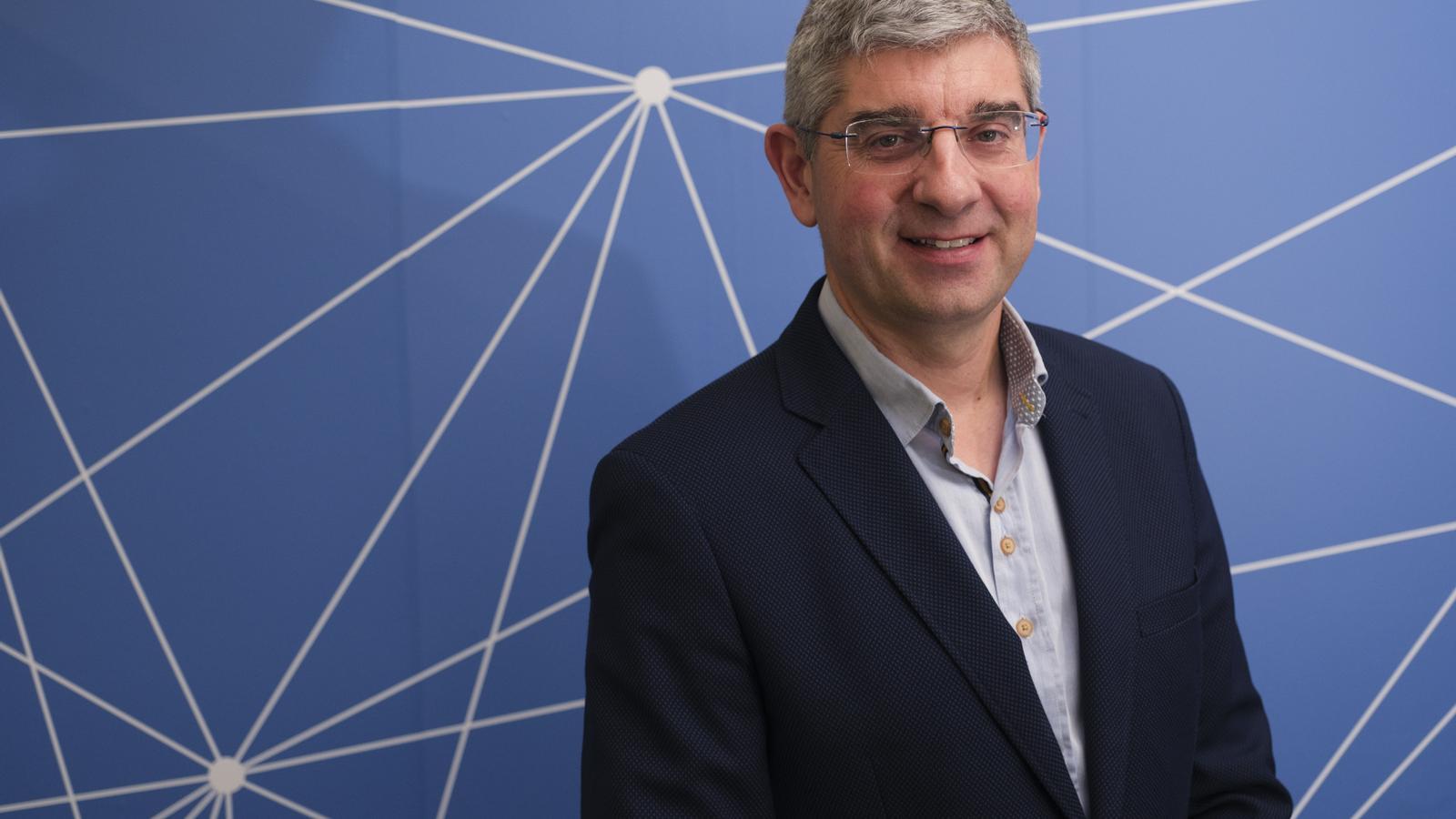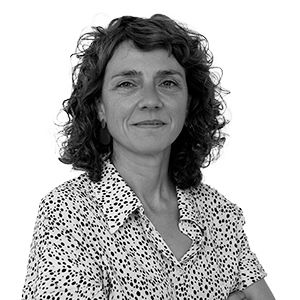Ignasi Ribas: "It will be very difficult to announce that we have found life outside of Earth."
Director of the Institute for Space Studies of Catalonia (IEEC)


The first time he laid eyes on a telescope, he saw the Moon. And Jupiter. And its satellites. And he was so struck that at that moment, he recalls, he felt certain he wanted to dedicate himself to it. And that at the time Ignasi Ribas (Manresa, 1971) was only 11 years old.
A research professor at the Institute of Space Sciences (ICE-CSIC), this Manresa native is a renowned exoplanet hunter, having identified more than seventy. He has also played a leading role in ESA space missions such as CHEOPS, PLATO, and Ariel, as well as in astronomical instruments such as CARMENES, which searches for planets similar to our own from the Calar Alto Observatory in Almería.
Since 2017, he has also directed the Institute for Space Studies of Catalonia (IEEC), a complex institution—made up of the UB, the UAB, the UPC, and the CSIC—which he has successfully placed at the forefront of international research and has been key in defining and deploying the strategy.
Now Ribas has decided not to renew his position as director of the IEEC in order to focus on the ambitious project he is leading, Spotless, which has a €2.5 million grant from the European Research Council and aims to increase the capacity of.
His first major media discovery was also controversial: in 2007, he announced that he had detected water vapor and other chemical compounds on a giant exoplanet.
— Whether our discovery was actually water is doubtful. And it's true that it was a highly contested article in the scientific community. In fact, most of the media articles I've published have turned out not to be entirely true. This is generally the case in science; you don't always get it right the first time, but you have to do it honestly.
Did it contain errors?
— More than errors, our interpretation of the data was probably inadequate. Still, we contributed to advancing science because we pioneered a technique that was subsequently developed and widely used by astronomers today: transmission spectroscopy. This technique allows us to observe how light from a star shines through a planet's atmosphere to try to identify what chemical compounds exist.
In fact, he came to exoplanets by studying stars.
— That's right. During a postdoctoral stay in the United States studying eclipsing binary stars—two stars orbiting each other—I collected a lot of data because I wanted to reconstruct the history of our Sun over the past 500 million years. When I analyzed the data, I saw that the Sun had been up to a thousand times more active in the past, and I analyzed how that heightened activity affected Earth and other planets in the Solar System. It's still my most cited scientific article! The study showed that stars change the radiation they emit throughout their lives. This was key for the exoplanet research community because it opened the door to understanding planetary atmospheres and how they evolved.
Last year, she won a prestigious European Research Council grant to continue stargazing and discovering Earth-like planets. The Spotless project.
— Two of the most widely used techniques for searching for planets, such as radial velocities and traffics, don't allow us to look at Earth-like objects, or exo-Earths. This is because the star doesn't behave like a completely stable object; rather, there is intrinsic variability typically caused by its stellar activity, by starspots. And since the star isn't stationary, but rotates, the spots change in shape, size, and position, inducing noise. In Spotless, the idea is to eliminate precisely these spots, in order to find exo-Earths and characterize small planets, which are the new frontier.
How will they do it?
— We're developing the world's most sophisticated star model, a digital twin, which will allow us to simulate how a star varies. We'll then take this model and a star we want to study and try to simulate all its possibilities. To do this, we train an artificial intelligence machine learning algorithm; we then provide some observations and ask it to determine which portion of the variations in the observations are due to stellar activity and which portions show the presence of a planet passing in front of the star. The initial results we're obtaining are very promising.
And now he's leaving the IEEC leadership, which he's led since 2017, to focus on Spotless.
— I firmly believe that a renewal of leadership is necessary at the institutions, and now the circumstances couldn't be more propitious. I applied to lead the IEEC not because I wanted to, but because the outgoing director at the time asked me to, and I had, and still have, a problem with saying no [laughs].
With what objectives did you take over the management?
— There were three objectives: investing in cross-cutting projects, developing nanosatellites, and increasing the sense of belonging among IEEC members.
AND?
— Check, check, checkWe have achieved all three objectives. We are probably the scientific institution that participates in the most ESA missions, from Gaia to Ariel or EuclidDespite the institutional complexity of the IEEC, we have created opportunities and many joint ideas have emerged with the participation of different institutions. We have also created multi-center groups that have participated in highly important missions. such as LISAIn the end, the IEEC's success is thanks, if you'll pardon the joke, to its people, enthusiastic individuals who have been able to drive projects and initiatives forward, and propel the institute forward. And also, in collaboration with the Catalan ecosystem, we've developed space instrumentation, just like children.
What future challenges does he leave for the person who will succeed him?
— At the scientific level, we're where we need to be. Perhaps we need a little more leadership, because while we participate in all the major missions, we don't lead them. Another challenge is consolidating funding and promoting the space sector.
He has been one of the key figures in promoting and advancing a space economy plan in Catalonia, the NewSpace strategy, approved by the Catalan government in October 2020.
— We identified an opportunity to boost the space economy in Catalonia, not by carrying out large missions, but by developing more modest projects. And we began to think about what kind of projects could be achieved with the funding we could secure. We knocked on many doors with Jordi Puig-Suari, who received the Cross of Sant Jordi a few years ago precisely for his contributions to the country; one of those doors was the Department of Digital Policies. We found a lot of common ground, and together we laid the foundations for the Catalan space strategy. Despite the various changes in government, everyone has continued to consider space a strategic sector for the country, with potential for growth and economic generation and highly skilled jobs.
"Space is the new Internet."
— This was told to me by an investor on the West Coast of the U.S. who was interested in a local aerospace company. Just as the internet is now a service platform, space will become much more than satellites and will also become a platform for space services, from secure communications to Earth observation for a multitude of purposes.
Within the NewSpace strategy They launched the Menut and theEnxaneta, two nanosatellites named after the children.
— And they have been a success. Next year, we will launch two more missions: the successor to the small one and PhotSat, the first astrophysical satellite developed entirely in Catalonia, which has a budget of 4 million euros and with which we will conduct pioneering sky observations. There is no other example in the world where the science we want to do has been done with a satellite. cubedThis satellite will have two telescopes, and as it orbits the Earth, it will photograph the sky. This will allow us to measure the brightness of the 40 million brightest stars. We will make all the data available to the international astronomical community.
When will we be able to announce that we have found life?
It will be very difficult to make this statement, and in any case, it will be based on an indirect discovery, after gathering evidence that on its own might not mean anything, but which together will ultimately convince us that there is evidence of life. But we still have a long way to go to reach a definitive and definitive conclusion.
